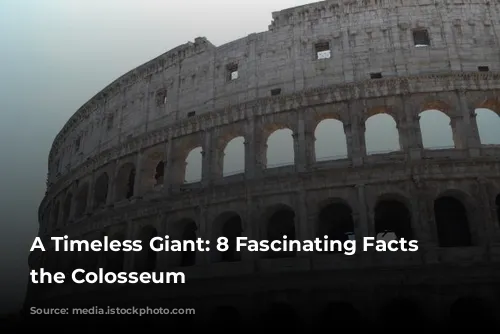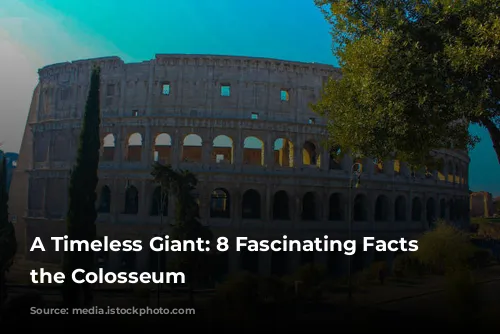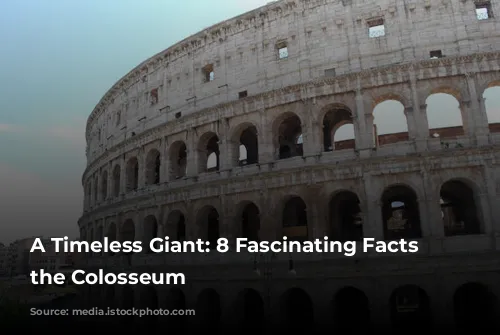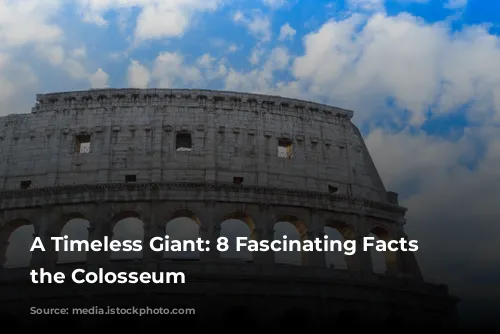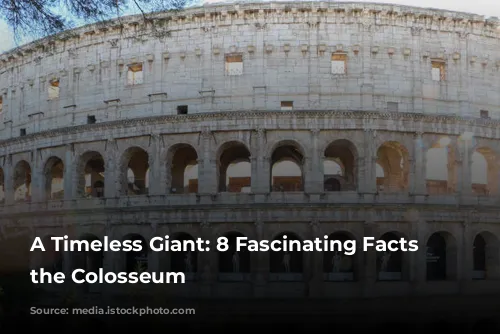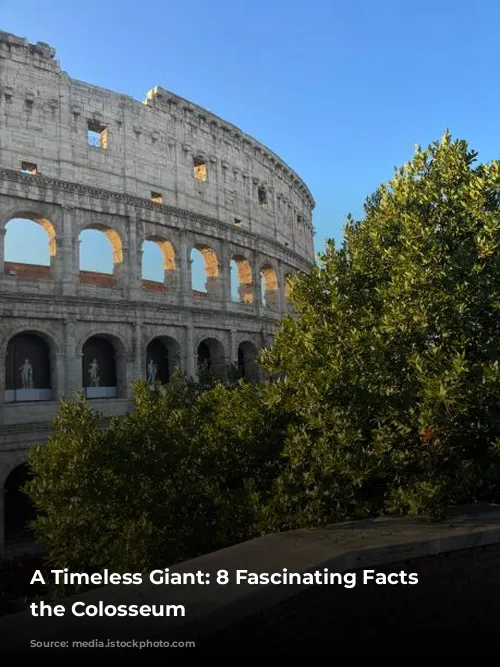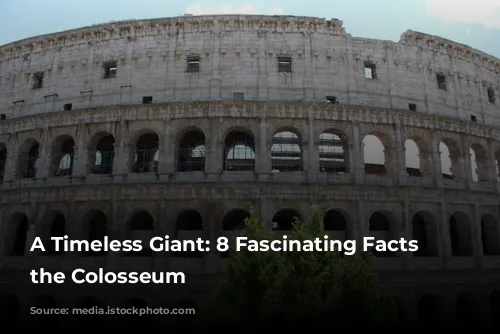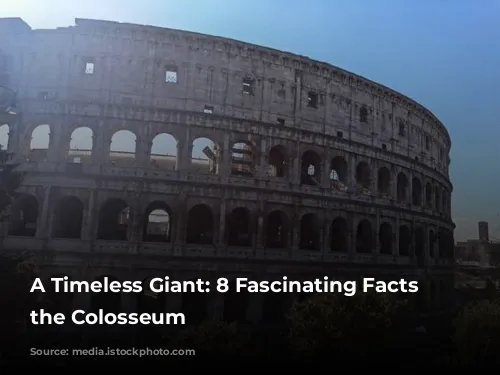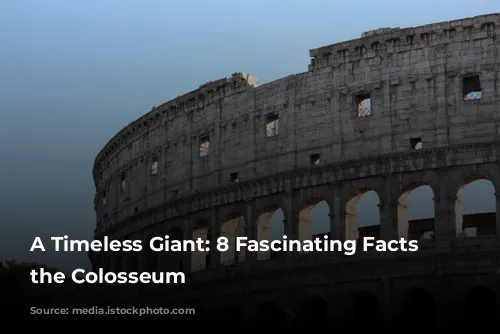The Colosseum is a monument to history, an iconic symbol of ancient Rome that continues to captivate the world. Imagine walking through modern Rome and suddenly encountering the massive arches of the Colosseum, a relic of the past rising up against the backdrop of the bustling city. It’s a moment that stays with you forever!
The Colosseum is much more than just a building. It’s a testament to the ingenuity of Roman engineering, a place where history unfolds before our eyes. This article will uncover eight captivating facts about the Colosseum that will amaze you and deepen your appreciation for this architectural marvel.
From Tickets to Tiers: The Organization of the Colosseum
Let’s start with the basics. Did you know that the Colosseum, like modern stadiums, required tickets for entry? That’s right! This ingenious system wasn’t just for show; it was crucial for crowd control, given the massive crowds that packed the arena.
Imagine 60,000 to 80,000 people eagerly awaiting a spectacle of gladiatorial combat! Imagine the chaos! To maintain order, Romans used sophisticated ticketing systems. It’s thought that fragments of pottery were initially used, but ivory disks were eventually employed, resembling our modern tickets. These tesserae, as they were called, indicated your seat, tier, and row, as well as which of the 80 gates you needed to enter.
But that’s not all! In ancient Rome, society was very hierarchical, and this was reflected in the seating arrangements at the Colosseum. The best seats, reserved for the emperor, his family, and their guests, offered a ringside view of the action, often splattered with the blood of the gladiators. Even the Vestal Virgins had their own private box! Senators occupied the podium around the lowest tier, their names carved into their seats. As you climbed higher, you encountered the patrician classes, followed by the lower classes, culminating in the nosebleed seats at the top of the Colosseum.
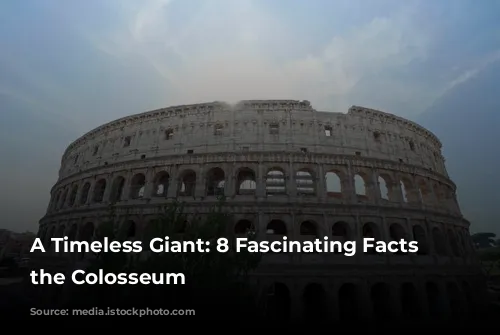
A Roof Above It All: The Colosseum’s Velarium
Ancient Rome’s ingenuity knew no bounds, and the Colosseum is no exception! This massive structure, spanning six acres, even boasted a retractable roof. It was designed to protect spectators from the scorching Italian sun. This impressive velarium, as it was called, was made from the same fabric used for ship sails – a testament to the practicality of the Roman people. The word velarium is even derived from the Latin word for sail.
To manage this complex system, Roman naval engineers were deployed during the games. They raised and lowered the awning, adjusting its angle as the sun moved across the sky. From their panoramic perches high up on the Colosseum, they manipulated the countless ropes that extended and retracted the velarium with incredible skill. But this ingenious system had its limitations. High winds or rain meant the velarium was lowered, leaving spectators exposed to the elements.
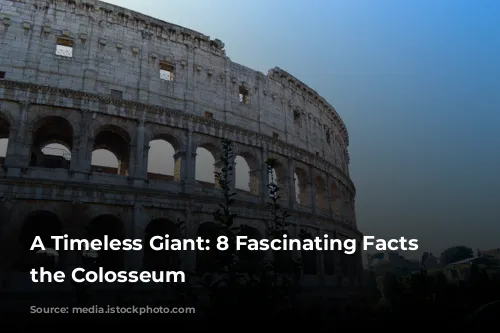
Naumachiae: Sea Battles in the Colosseum
The Colosseum was more than just a space for gladiatorial combat. For a brief period after its construction, it hosted spectacular sea battles, known as naumachiae. While these bloody war games were often staged on lakes outside the city, the Colosseum offered a unique spectacle in the heart of Rome.
During the reign of Emperor Titus, the arena was transformed into a battlefield by flooding it with water. Special canals, sluice gates, and pools were utilized to create this unique setting. Animals, including horses and bulls, were even trained to play the role of sea monsters in this perverse charade.
Due to the Colosseum’s limited size, miniature ships were constructed, replicating the glory of naval warfare in a miniature bathtub of water. Imagine the chaos! Oarsmen rowed furiously, archers fired arrows, and gladiators clashed in a bloodbath, re-enacting the epic victories of the Roman navy.
However, this spectacle was short-lived. Emperor Domitian, who later ascended to power, put an end to the sea battles, opting to focus on gladiatorial combat. The underground hypogeum, a vast network of tunnels, was constructed, ushering in a new era of sophisticated special effects for the games.
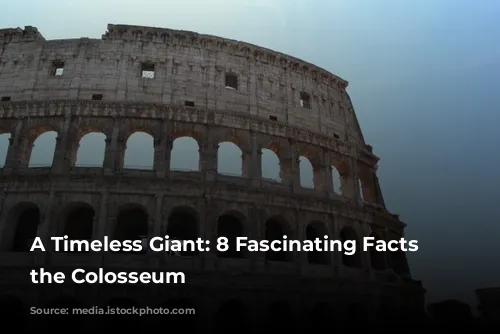
Love and Leisure: The Colosseum’s Unexpected Side
The Colosseum was not just a stage for gladiatorial combat and sea battles. It also played host to romance and leisure. The word “fornication” originates from the Latin word “fornix,” which means “arch” or “vaulted space.” The arches of the Colosseum were a popular spot for illicit trysts and prostitutes looking to drum up business after the excitement of the games.
The Colosseum was also a well-equipped venue for its patrons. Just like modern stadiums, it had public fountains to quench the thirst of spectators, especially on hot summer days. Public toilets were also part of the infrastructure, consisting of rows of seats with holes, conveniently drained by a system of sewers. The arena floor itself was covered in sand, a practical choice for absorbing blood, urine, and other unpleasantries from the games.
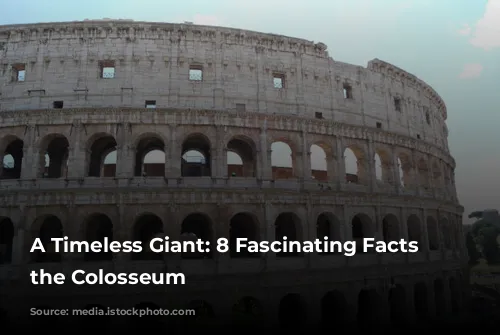
From Glory to Ruin: The Colosseum’s Legacy
The Colosseum, a symbol of Roman power and grandeur, eventually fell into disuse and decline. The holes that pockmark its outer façade are a testament to its long history. Looters plundered its precious materials, including the massive metal clamps that held the building together. These clamps were melted down, primarily during the Middle Ages, to create weapons – a stark reminder of the shifting sands of time.
Despite its deterioration, the Colosseum still stands today, a powerful symbol of ancient Rome’s legacy. It’s a place where history, architecture, and spectacle intertwine to create a truly unforgettable experience. It’s a reminder that even in the face of time, the power of human ingenuity and the beauty of history endure.
Visit the Colosseum and experience its magnificence for yourself!
